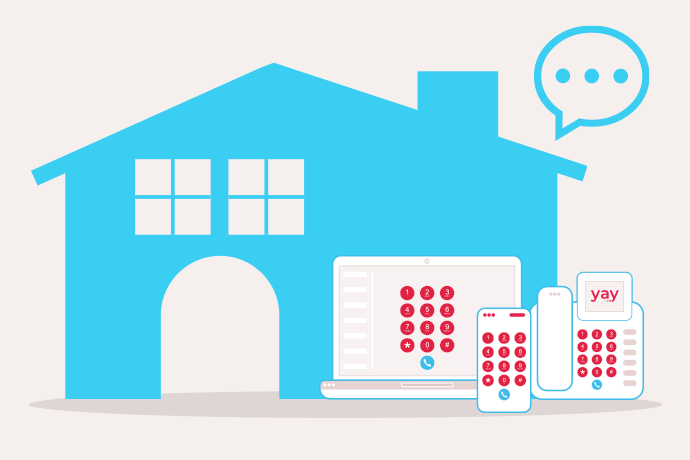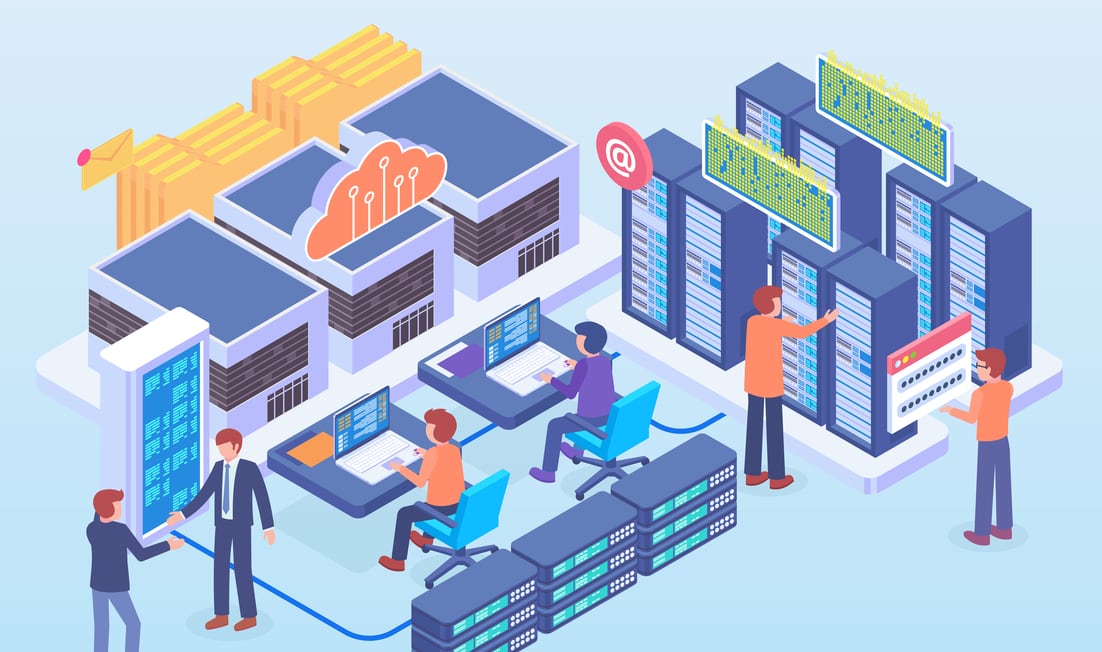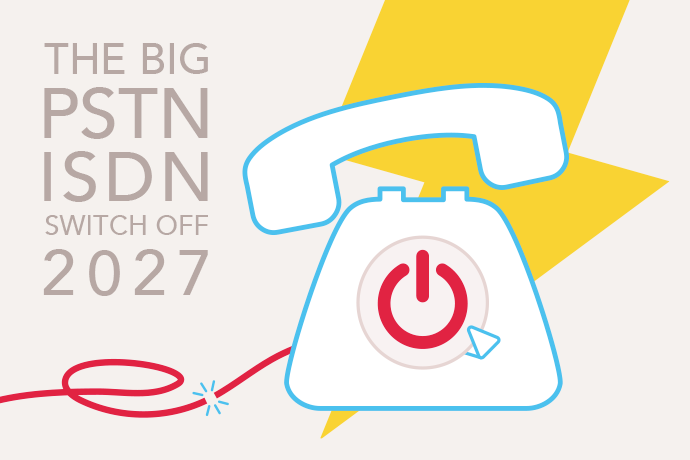Cart Total
$0.00
-
Your shopping cart is empty
Loading

Hello! Log in Your Account
New customer? Start here


|
5 min read
Contents
Quick Summary
Learn about government initiatives to bring gigabit broadband to the UK and how cloud-based services are driving them
You’ve probably already heard that cloud-based solutions are trusted not just by SMEs, but by household names, with the likes of Spotify, Snapchat, Coca Cola (and Yay.com!) turning to Google Cloud and Samsung, Netflix and even NASA using Amazon’s AWS cloud platform. Coincidentally, both of these cloud platforms are listed on the UK government’s Digital Marketplace, which lists trusted technology for digital projects in the public sector, meaning that cloud-based solutions are trusted by SMEs, multinationals and government bodies as well.
What’s more, the UK government is now funding programmes to supply gigabit-capable broadband across the UK, listing increased adoption of cloud-based PBX services like cloud phone systems as one of the key drivers of these initiatives. A more capable internet connection may be necessary when adopting such services due to the increased load on existing broadband infrastructure when multiple services, that were once provided by separate hardware, are now hosted in the cloud with data being transmitted across a single connection.
The UK government recognises the importance of high-speed internet for all and its capabilities to enrich the learning of its children and improve the productivity and output of its businesses. As a result, and in response to Ofcom’s Broadband USO which aims to give “…people in the UK the right to request a decent and affordable broadband connection…”, Building Digital UK, part of the Department for Digital, Culture, Media & Sport (DCMS), has launched a number of programmes in order to bring gigabit broadband to the nation.
The Local Full Fibre Networks Programme (LFFNP) is the umbrella initiative launched by the UK Government to implement gigabit-capable broadband infrastructure to the UK. Thirty one schools in rural areas were among the first to benefit from a £200 million fund, called the Rural Gigabit Connectivity (RGC) programme, one of a number of initiatives sitting beneath the LFFNP. Part of an ‘outside-in’ approach, where the remotest areas are serviced first to ensure they are not disadvantaged or left behind, the RGC is an indicator of the government’s feelings about gigabit broadband connectivity being a nationwide necessity for the future, rather than a luxury reserved for the few.
Alongside the RGC is the Gigabit Broadband Voucher Scheme (GBVS). Currently funded through March 2021, the Gigabit Voucher Scheme is helping to pay the installation costs of bringing gigabit-capable broadband to SMEs and communities via full fibre optic cable installation, which has traditionally been too cost-prohibitive for ISPs to install.
Full fibre constitutes an overhaul of the fibre connection to your home. FTTC stands for Fibre to the Cabinet (meaning your local roadside cabinet) and constitutes a combination of fibre optic cable and traditional copper cable, with the copper being fed from the cabinet to the premises and the fibre optic being fed to the cabinet from the telephone exchange or distribution point. The copper cable is cheaper than fibre optic cable, but, due to the physics, is far slower. In short, photons travel at the speed of light through fibre-optic cable, whereas copper cable transmits the data via electrons, which move at less than one percent of this speed.
FTTC, in some locations, has been superseded by FTTP, or fibre-to-the-premises which, as the name implies, involves running fibre optic cable all the way to the premises, doing away with the copper cable entirely. This ‘full-fibre’ configuration removes the copper bottleneck in the supply of high speeds to the premises and is capable of transmitting one gigabit of data (equivalent to 1000Megabits) per second and supercharging upload speeds, which typically lag far behind download speeds, to equal that gigabit reading.
As residences and businesses adopt more smart devices and begin to use more cloud-based services that, traditionally, would have been provided by hardware, the load on any given broadband connection will continue to increase. This necessitates a fast, reliable broadband connection with the bandwidth available to service many devices simultaneously. As your business steps into the future, investing in cloud-based systems for everything from your business phone system, with a company like Yay.com, to collaboration platforms with a service like Google Drive, you will want to make sure your broadband connection is as fast and reliable as possible so that all of these services can coexist harmoniously.
All of this means better performance for (and from) you and your business, with more powerful platforms and integrations available as the seamless nature of the internet begins to permeate and re-revolutionise systems we previously may not have considered it touching. Staying at the cutting edge technologically ensures that your business has the edge over the competition as your efficiency and productivity increase.
Put together, the above initiatives and programmes paint the picture of a government heavily invested in universal access to high-speed internet. When the UK government, along with companies like Coca Cola, are trusting The Cloud with their data and investment, it is surely wise to do the same. Get started with your move to cloud-based services with a move to a VoIP provider like Yay.com. If your business does not have full FTTP broadband, check your eligibility for support from the Gigabit Broadband Voucher Scheme to make sure your business’ infrastructure can keep up with your ambition.


Discover how easily franchise owners can create brand consistency and align with local market needs by adopting a Cloud-based VoIP service and virtual numbers.
Posted July 9 2024 | 5 min

Think your business is too young for a professional phone system? Here are some indicators that it might just be time to upgrade to hosted VoIP.
Revised January 18 2024 | 5 min

From higher call quality to call analytics, see how a flexible Cloud phone system can provide cost-effective, functional solutions to help estate agencies grow.
Posted August 31 2022 | 5 min

Check out these 20 reasons why cloud collaboration is the best business investment you'll make this year.
Posted January 20 2022 | 13 min

Cloud phone system providers offer different sets of features at different price points. We break down ours.
Posted January 4 2022 | 4 min

While VoIP loosely refers to all implementations of voice calling over the internet, a cloud-based phone system is a business solution hosted in the cloud.
Posted January 4 2022 | 4 min

Dubbed 'The Big BT Switch Off', UK PSTN and ISDN analogue phone services will be phased out by the end of 2027.
Revised December 22 2021 | 16 min

A Cloud Phone System is one that provides business telephone services with VoIP technology. Read on to find out more.
Revised September 23 2021 | 7 min

If yours is a big business hesitant to move your phone system into the cloud, read here to find out if you're missing out on more than you think.
Posted August 3 2021 | 5 min

More than just VoIP phones can be used to make and receive calls with your business phone system. IP intercoms make highly useful SIP endpoints too.
Posted February 26 2021 | 5 min

Just by virtue of being hosted in the cloud a VoIP phone system can benefit your business. We discuss these benefits and how cloud-hosting makes them possible.
Posted October 27 2020 | 5 min

Find out how Cloud-based VoIP Phone Systems can offer you considerable advantages over your competition.
Posted March 20 2019 | 4 min

Get to know Time Diaries and how they can assist your Cloud PBX in handling phone calls when your office or business is closed for the day.
Posted May 18 2018 | 2 min

Businesses lose around £90m in sales just from missed calls. Here's how your hosted VoIP Cloud PBX can stop your business losing valuable calls and revenue.
Posted November 21 2017 | 4 min

Use your hosted VoIP phone system to professionally handle incoming calls when you are away from the office during holiday times.
Posted August 24 2017 | 4 min

Use the Caller ID options included with your Cloud PBX to make an impact when calling your clients and business leads.
Posted August 4 2017 | 3 min

Hosted VoIP makes it easier than ever to stay in contact and collaborate, whatever the device, wherever you are. Here are 5 ways VoIP helps collaboration.
Posted March 9 2017 | 3 min

More than just a phone system, hosted VoIP opens up a host of alternate business features, such as sending fax and opening doors. See what you can do today.
Posted February 6 2017 | 4 min